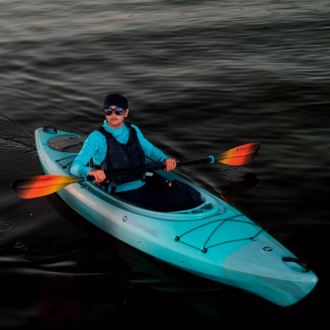
For the general population the rain marks the end of the joyous season of beaches, barbecues and beers and the start of the long winter hibernation. For kayakers, it’s precisely the opposite. Rain means water. Water means rivers. Rivers mean paddling…. you get it.
Now, it can be tempting to get buzzed on the first sign of rain, rally the crew and drive two hours to the rivers edge only to scratch your head at why the downpour outside your office has not correlated to a flowing river.
I get it, I spend most rainy days day dreaming of all the kayaking i could be doing. On the other hand, it could be bone dry in the city and a coincidental, boredom driven glance at the river gauge shows the river spiking.
It can all get rather confusing.
As another promising winter rounds the bend, let’s run you through a crash course in why some rivers rise when they do. In 500 words time, you will have the confidence to know exactly when and why your favourite stretch of river comes back into flow. It’s all to do with catchments.
River catchments are essentially the giant bucket that catches the rain and feeds it into the river below. Some rivers have one giant bucket. Some rivers have several smaller buckets with garden hoses, or tributaries, connecting them to the major source. If your favourite river has a series of catchments, it increases the chance of the river coming in – provided the rain hits the spot. Understanding where the major bucket, or catchment, for your favourite river is crucial to having a reliable understanding of when it will flow. For example, the Murray River that runs through Dwellingup has its source at Mt Keats in Williams. Knowing this, I know that when the black cloud opens over Williams the Murray will come into flow, even if it is not raining in Perth. Click here for the Williams forecast
Understanding the size of the catchment is another crucial factor.
Essentially, the larger the bucket, the more water it takes to fill to the point of flowing downstream – but the longer the stream will continue once full.
The smaller the bucket, the less water it takes to fill and the faster the river will flow – but the shorter the flow once the sun comes out. Some catchments, provided an adequate preseason top up, will last all season even in sunny weather. Nano creeks and rivers will drop out as soon as the rain stops.
The next key player is the local river gauge. This marks when the river begins to rise and fall. All major rivers should have an online gauge, Murray River gauge is here, (11.2m is the lower cut off), Kayak Canberra is a good source for NSW/ACT gauges. Many nano creeks will more than likely rely on a physical sighted gauge – such as a bridge pillar, so you will need to chat with a local paddler to get the right gauge. You may have noticed that after a particularly dry summer, the gauges take longer to rise. This is because the sandy river banks absorb the bulk of the first rains. Fret not though, once the river banks and beds are satisfied the next lot of rain will wash right off and straight into the river.
So there you have it. A crash course into the basic mechanics of catchments and rivers. Now, get your kit ready so the next time that illustrius catchment fills you will be ready to go.
Come in store to have a chat about your favourite river and get yourself kitted out in our large range of white water equipment.

 Kayaks, Canoes, SUPs
Kayaks, Canoes, SUPs Accesories
Accesories